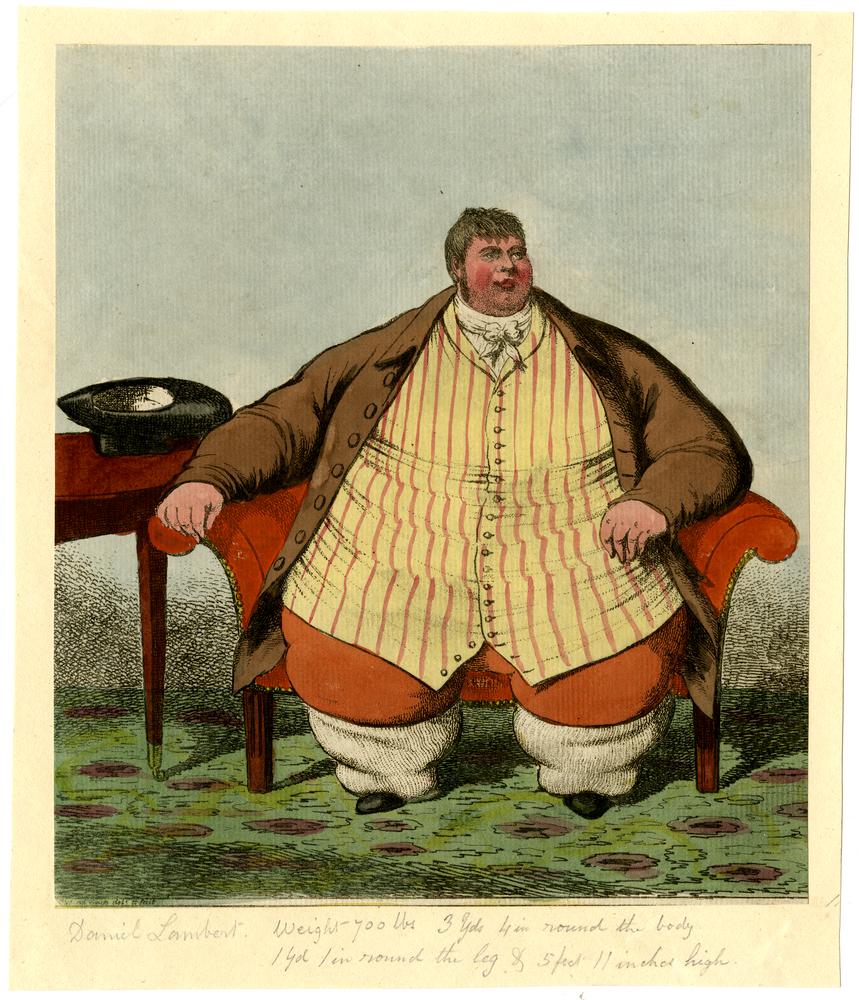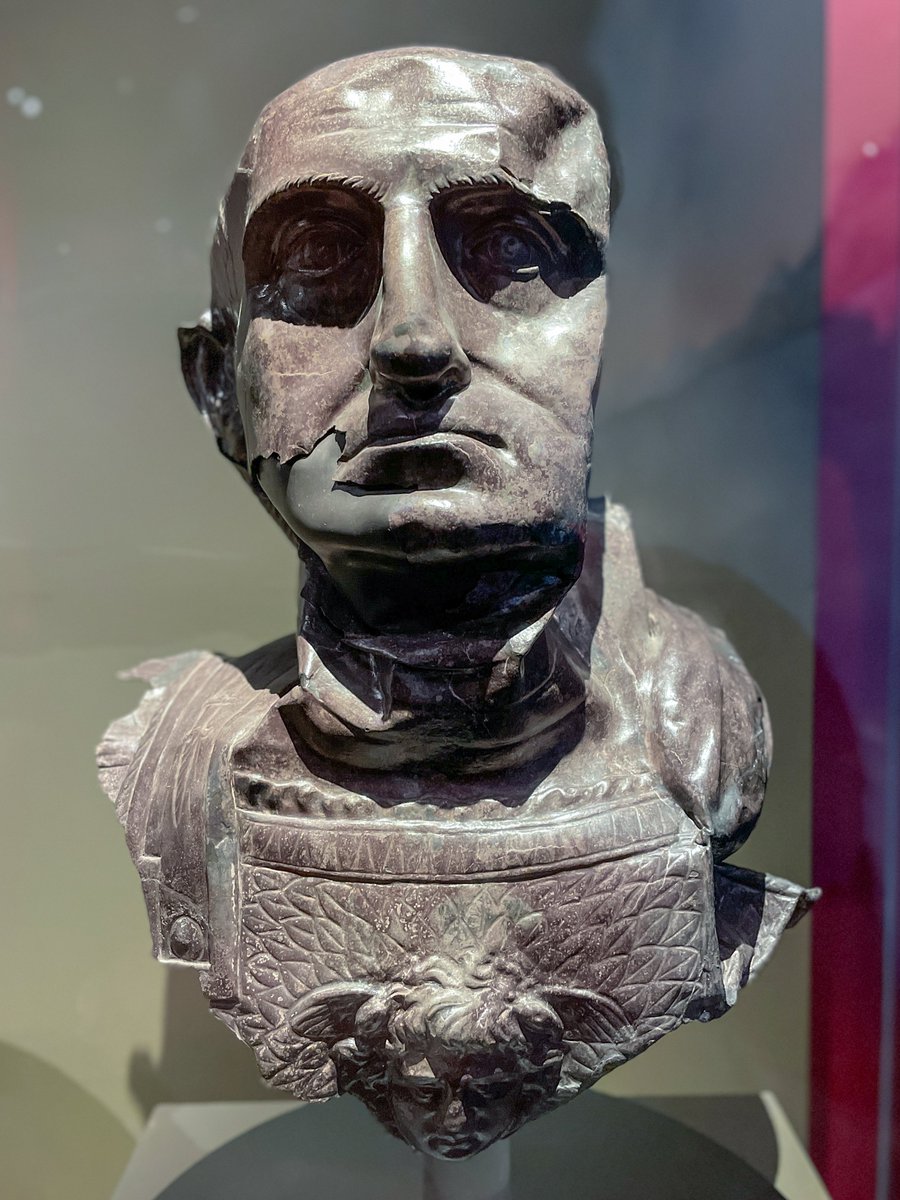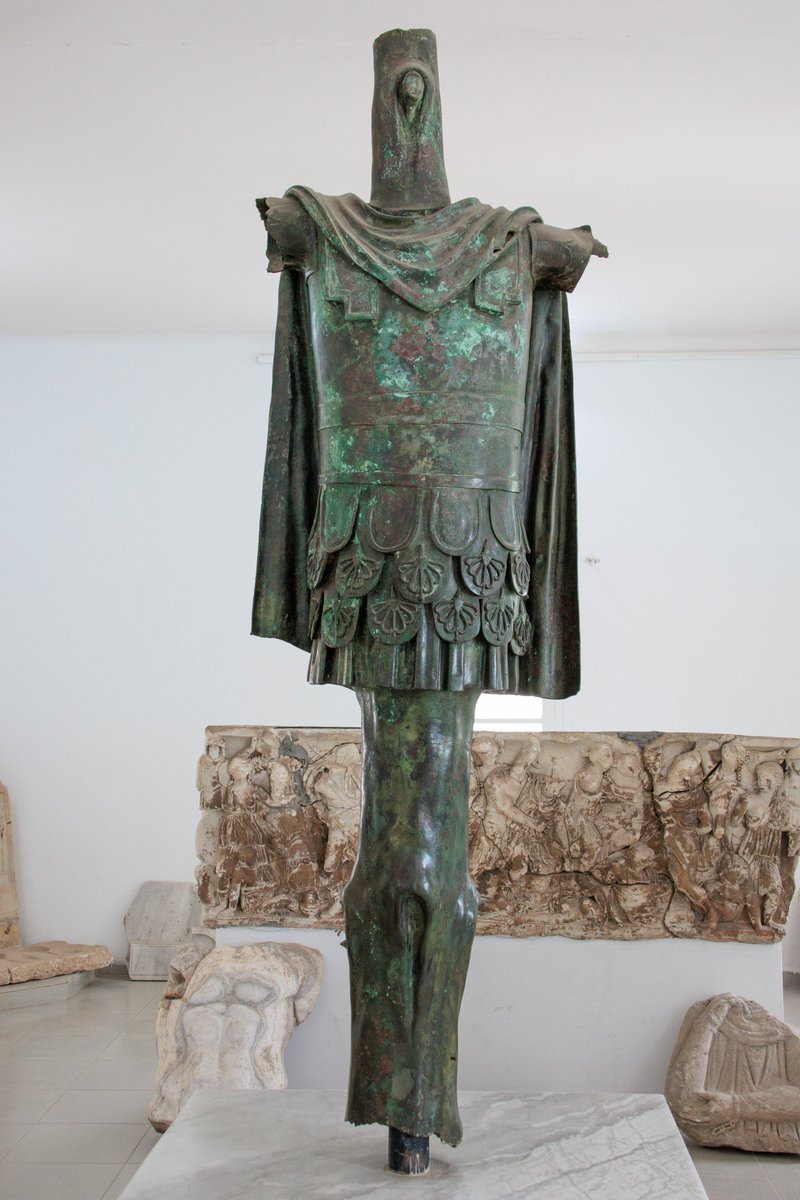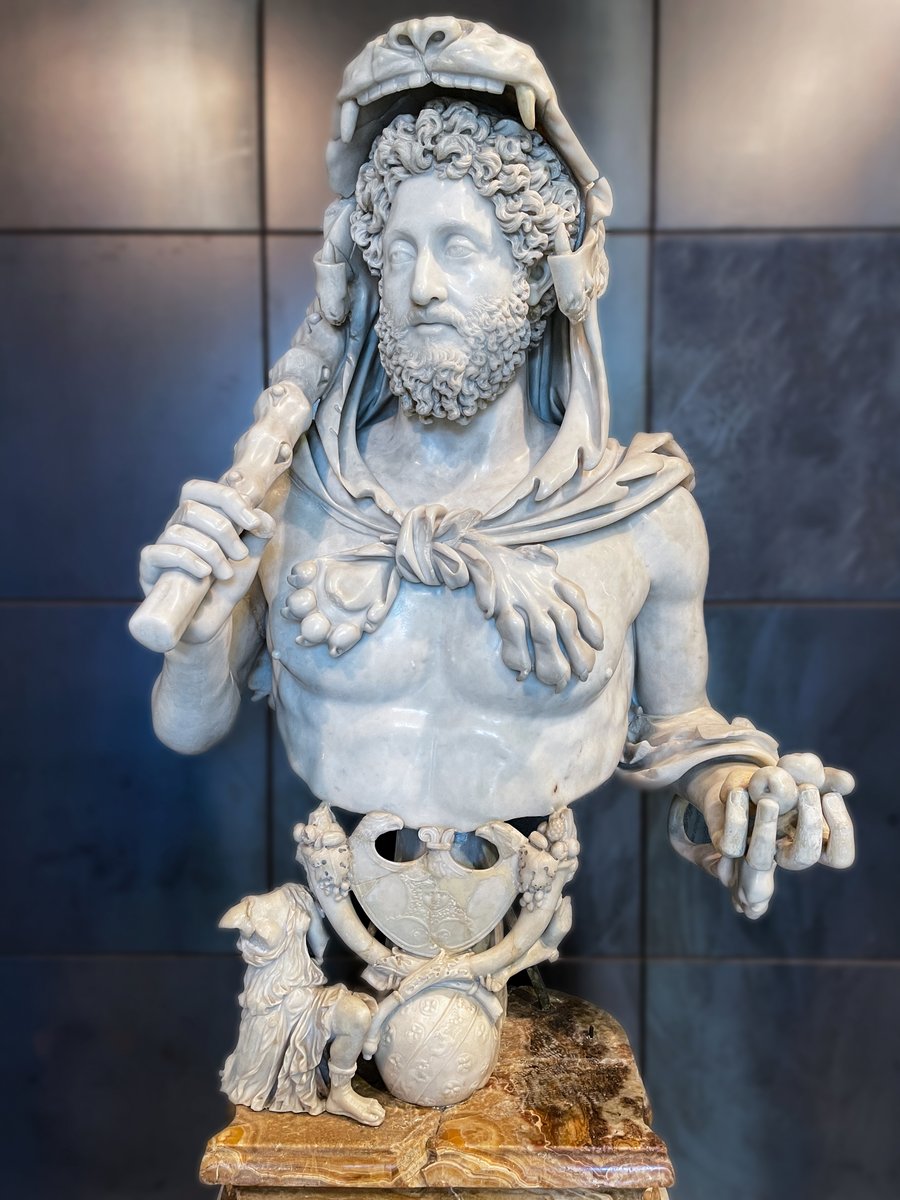1) In remembrance of that "prodigy in nature" Daniel Lambert, a "remarkably great personage" who amazed the people of England at the turn of the nineteenth century. Lambert was born in Leicester in 1770, an active field-sportsman in his youth, "not of more than usual size"... 

2) Working as keeper of Leicester jail, Lambert's size began to grow - despite by his own account, abstaining from alcohol and not eating unusual amounts of food. When the jail closed in 1805, Lambert weighed 50 stone - the heaviest recorded person up to that point in history.. 

3) With the closure of his jail, poverty sadly forced Lambert to display himself as a spectacle in London and around England. He travelled to the metropolis in a specially-made, reinforced carriage and there people paid a shilling each to marvel at his size.. 

4) Visiting Lambert soon became highly fashionable, with King George III even coming to meet him. People were impressed by his intelligence and affable personality - with no real stigma around obesity, Lambert was by all accounts mostly treated with great respect and kindness... 

5) Lambert arrived at Stamford, Lincolnshire in 1809 where he quickly became a popular attraction in the country town. Sadly, on the morning of 21 July, "nature had endured all the trespass she could admit" and Lambert collapsed and died suddenly at the age of 39.. 

6) The window and wall of Lambert's ground-floor room had to be demolished in order to remove his enormous body. Weighed on a special balance he tipped the scales at 52 stone, 11 lbs, at the time of his death. How to go about the burial of the man known as the "human mammoth?... 

7) Lambert was placed in a huge coffin, almost square in shape and built on wheels so that it could be rolled to the grave. On 23 June it took twenty local men half an hour to lower his coffin into the grave. His wonderful gravestone at Stamford is worth appreciating in full: 

8) "In Remembrance of that Prodigy in Nature.
DANIEL LAMBERT.
a Native of Leicester:
who was possessed of an exalted and convivial Mind
and in personal Greatness had no Competitor
He measured three Feet one Inch round the Leg
nine Feet four Inches round the Body...
DANIEL LAMBERT.
a Native of Leicester:
who was possessed of an exalted and convivial Mind
and in personal Greatness had no Competitor
He measured three Feet one Inch round the Leg
nine Feet four Inches round the Body...

9) "...and weighed FIFTY TWO STONE ELEVEN POUNDS!
He departed this Life on the 21st of June 1809
Aged 39 years.
As a Testimony of Respect this Stone is erected by his Friends in Leicester."
He departed this Life on the 21st of June 1809
Aged 39 years.
As a Testimony of Respect this Stone is erected by his Friends in Leicester."

The grave of England's heaviest man, the "intelligent and pleasant" Daniel Lambert, can be visited in the churchyard of St. Martin's, Stamford. #History #England #Lincolnshire 



• • •
Missing some Tweet in this thread? You can try to
force a refresh






















